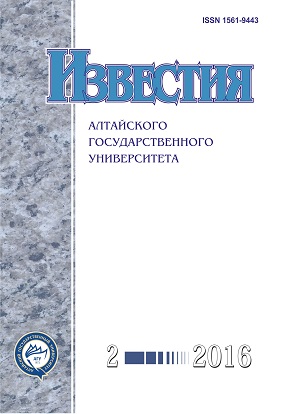The Motivation of Active Collaboration of the Population of the Kursk Region during the German Occupation (1941–1943)
Abstract
The article analyzes the reasons and motivation for some Soviet citizens’ desertion to Nazi Germany in the Great Patriotic War. The article is based on archival materials of criminal cases of the KGB of the USSR in the Belgorod region in relation to persons who in the period of temporary occupation of the region volunteered to the civil and repressive bodies established by the German invaders and their allies. It was found that the main reasons which prompted some Soviet citizens to serve for Nazi Germany were hatred of the Soviet regime, the desire to avenge their relatives and friends, the desire to curry favor with the occupation authorities, reckless and criminal propensities. It was stated that in the appointment for the chief of positions in repressive bodies (city, district police, gendarmerie) collaborationist organs of civil government (mayor, mayors, heads of departments, foremen) in the south-eastern districts of the Kursk region, the leadership of the German occupation authorities and intelligence authorities took into consideration the sincere desire to serve the interests of Nazi Germany.
DOI 10.14258/izvasu(2016)2-05
Downloads
Metrics
References
Никифоров С.А. Политика оккупационных властей на территории Курской области в 1941–1943 гг. : дис. … канд. ист. наук. — Курск, 2003.
Шевелев А.В. Разведывательные, полицейские и пропагандистские формирования оккупационных властей на территории Курской области в годы Великой Отечественной войны : дис. … канд. ист. наук. — Курск, 2004.
Коровин В.В. Партизанское движение на территории Курской области : дис. … д-ра ист. наук. — Курск, 2008.
Бормотова А.Р. Основные особенности развития печати в годы Великой Отечественно войны 1941–1945 гг. (по материалам Курской области) // Научные ведомости Белгород. гос. ун-та. — Серия: История. Политология. Экономика. Информатика. — 2010. — №1(72). — Т. 13.
Органы государственной безопасности СССР в Великой Отечественной войне : Сб. документов. — Т. 2. — Кн. 1. — М., 2000.
Футорянский Л.И. Казачьи части на фронтах Второй мировой ойны // Вестн. Оренбург. гос. ун-та. — 2005. — №9.
Напсо Н.Т. Северокавказские воинские формирования в германских вооруженных силах (1941–1945 гг.) // Казанская наука. — 2010. — №8.
Ратушняк О.В. Участие казачества во Второй мировой войне на стороне Германии // Теория и практика общественного развития. Исторические науки. — 2013. — №3.
Синицын Ф.Л. Депортации народов как фактор дестабилизации этнической ситуации в Поволжском, Кавказском и Крымском регионах СССР (1941–1944 гг.) // Информационная безопасность регионов : Научно-практический журнал. — 2011. — №2 (9).
Андреев В. Народная война. — М., 1949.
Архив Управления Федеральной службы безопасности Российской Федерации по Курской области (АУФСБ РФ по Курск. обл.). — Ф. 10. — Оп. 1. — Д. 5 (1945).
Архив Управления Федеральной службы безопасности Российской Федерации по Белгородской области (АУФСБ РФ по Белгор. обл.). — АУД №13132. — Т. 4.
АУФСБ РФ по Белгор. обл. — АУД №13132. — Т. 2.
АУФСБ РФ по Белгор. обл. — Ф. 12. — АУД №11183. — Т. 8.
АУФСБ РФ по Белгор. обл. — Ф. 13. — АУД №9736. — Т. 1.
АУФСБ РФ по Белгор. обл. — Ф. 12. — АУД. №11183. — Т. 1.
Izvestiya of Altai State University is a golden publisher, as we allow self-archiving, but most importantly we are fully transparent about your rights.
Authors may present and discuss their findings ahead of publication: at biological or scientific conferences, on preprint servers, in public databases, and in blogs, wikis, tweets, and other informal communication channels.
Izvestiya of Altai State University allows authors to deposit manuscripts (currently under review or those for intended submission to Izvestiya of Altai State University) in non-commercial, pre-print servers such as ArXiv.
Authors who publish with this journal agree to the following terms:
- Authors retain copyright and grant the journal right of first publication with the work simultaneously licensed under a Creative Commons Attribution License (CC BY 4.0) that allows others to share the work with an acknowledgement of the work's authorship and initial publication in this journal.
- Authors are able to enter into separate, additional contractual arrangements for the non-exclusive distribution of the journal's published version of the work (e.g., post it to an institutional repository or publish it in a book), with an acknowledgement of its initial publication in this journal.
- Authors are permitted and encouraged to post their work online (e.g., in institutional repositories or on their website) prior to and during the submission process, as it can lead to productive exchanges, as well as earlier and greater citation of published work (See The Effect of Open Access).








